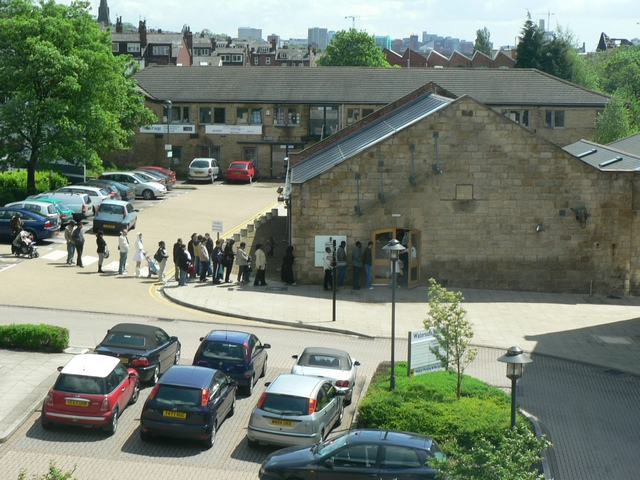The maltreatment of women in the UK asylum system: what must change?
- University of Bristol Pro Bono Blog

- Feb 25
- 4 min read

Pinkston Drive, Sighthill. Housed asylum seekers, now demolished
Sexual abuse, violence, and the denial of basic human rights disproportionately affects already-vulnerable female asylum seekers. Therefore, the UK asylum system must adapt in order to accommodate the particular needs of women, and to avoid their additional marginalization on entry to the UK and the retraumatising of sexual abuse victims.
Asylum seeking can never be regarded as be an informed choice, as Somali-British poet Warsan Shire puts it in her poem ‘Home’: ‘no one puts their children in a boat unless the water is safer than the land’. Yet any women and girls currently seeking asylum in the UK who have experienced extreme forms of sexual violence in their home countries are being ‘retraumatised’ by the inadequate protections available in the UK’s asylum system. The system indirectly discriminates against female asylum seekers by failing to provide for women’s basic needs, let alone by allowing for abusive and violent living conditions.
With obvious reference to asylum seekers being a vulnerable group themselves, you might ask why this post focuses on women. A large proportion of female asylum seekers are fleeing from sexual and violent trauma carried out in their home countries, having been victim to gender-based violence, forced marriages, female genital mutilation (FGM), the list goes on. Of course, most asylum seekers flee to the UK with hopes of an improved living standard and recognition of basic civil liberties. Yet the reality is that the UK system falters in providing a safe haven for these women, according to reports from charities such as Rape Crisis. The mental and physical health of women is compromised by a lack of access to basic healthcare for pregnant women, limited oversight from the Home Office, all furthered by a lack of recognition in staff training of the gender-specific traumas these women have experienced. Considering this insight from reports by charities such as Rape Crisis, the lens of the female perspective highlights the flaws of an already-faulty system, and thus helps to better understand how the system mistreats asylum seekers as a vulnerable group in themselves.
A report carried out by Rape Crisis in November 2024, titled ‘Not safe here’ (linked above), outlines the pitfalls of the asylum accommodation system, finding that already-vulnerable women and girls are being exposed to a ‘hostile environment’ that enables systematic abuse. Women are forced to live in ‘mixed-sex settings’, and have faced ‘further sexual violence’ in the accommodation provided. Individual testimonies have even accounted that staff members of the accommodation have abused their ‘position of trust and power’, with reports of ‘physical violence’, abuse, and coercion.
Needless to say, the process of seeking asylum in the UK is notoriously rigorous. Applicants awaiting immigration decisions are held in detention centres, with their conditions being described as ‘shocking’ by the BBC, due to severe overcrowding. Furthermore, the Centre on Migration, Policy and Society (COMPAS) states that the outcomes of claims are determined by a ‘credibility assessment’ comprised of interviews with asylum seekers carried out by government officials. Interviewers are not sufficiently trained to understand and recognise the effects of the trauma that these applicants have suffered. In fact, being a victim to the particularly female traumas listed above is likely to negatively affect the outcome of the decision. COMPAS states that ‘desperation…can make a credible person say unbelievable things’. Therefore, the fact that decision-makers are insufficiently informed can mean that a woman’s truthful, valid account of the disturbances she has experienced is dismissed as not being ‘credible’.
Moreover, applications are commonly refused on the basis of a lack of sufficient information. One account provided by Rape Crisis stated that a woman’s application was rejected because ‘she couldn’t remember the exact date’ in which her daughter was forced to undergo FGM. As a result of this paradoxical logic, the application process actually discriminates against victims of abuse, rather than actively supporting them by providing refuge.
Thus, it is clear that women and girls, despite often being victims of abhorrent abuse, are discriminated against in the process of seeking asylum. But how can this change? Firstly, the statutory requirements for proving ‘identity’ need to be amended — an asylum seeker fleeing from their home country cannot realistically obtain identification when this has to be approved by their home state. Secondly, the credibility assessment must be carried out by professionals that are trained on the realities of abuse, and any account of traumatic experience must be viewed as a credible reason for seeking asylum, not a factor that can be dismissed as ‘unbelievable’. Finally, and most importantly, asylum accommodation must, at a minimum, provide for women’s basic needs — healthcare, managerial safeguarding, and an established complaints system must be enforced.
Asylum seekers are by definition, victims themselves —victims of conflict, homelessness and uncertainty. However, female asylum seekers face burdens that are supplementary to these sufferings,and the asylum system wrongly disregards this.

Eaton House Immigration Reporting Centre, Hounslow

Home Office Reporting Centre, Kirkstall, Leeds
Written by: Charlotte Carroll



Comments